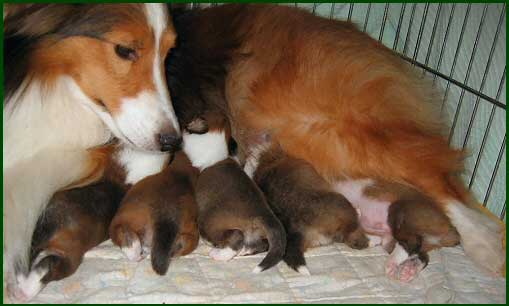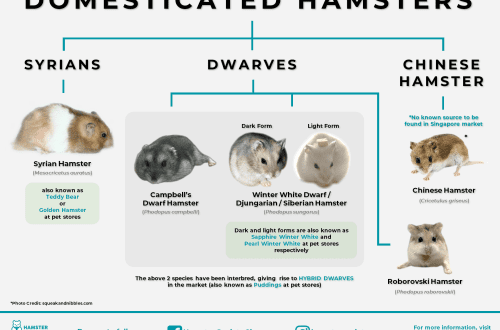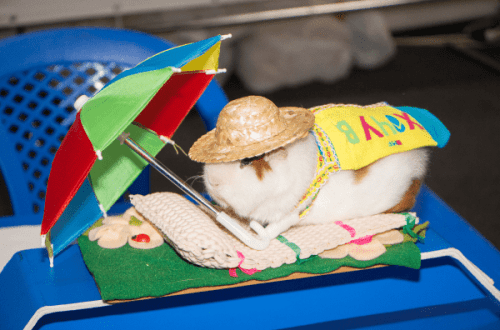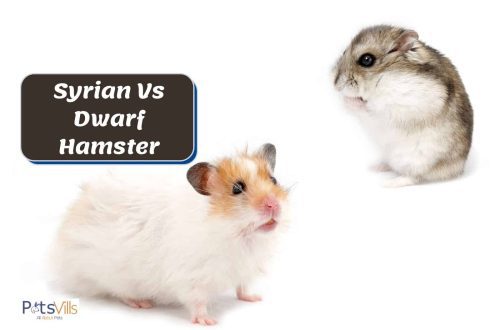
Sheltie breeding
Sheltie guinea pigs do not have rosettes, and when babies are born, their coat is smooth, the hair on the head grows in the “from” direction, and the muzzle is smooth. Shelties are carriers of the genes responsible for short and long hair, that is, if your pet belongs to the Sheltie breed, then you are the owner of a long-haired pig without rosettes, which appeared by crossing smooth-haired and Peruvian guinea pigs, and then their descendants, before moment, until the desired type of long-haired pig without rosettes is obtained. By crossing Sheltie with Sheltie, only Shelties can be obtained, since they are the owners of only recessive genes.
Sheltie guinea pigs do not have rosettes, and when babies are born, their coat is smooth, the hair on the head grows in the “from” direction, and the muzzle is smooth. Shelties are carriers of the genes responsible for short and long hair, that is, if your pet belongs to the Sheltie breed, then you are the owner of a long-haired pig without rosettes, which appeared by crossing smooth-haired and Peruvian guinea pigs, and then their descendants, before moment, until the desired type of long-haired pig without rosettes is obtained. By crossing Sheltie with Sheltie, only Shelties can be obtained, since they are the owners of only recessive genes.
Sheltie guinea pigs are very common in the US and slightly less so in Canada, where they are called Silkies. Both smooth and Peruvian pigs, in terms of their coat type, have two main genes that determine coat quality. In short, the gene for short hair is dominant over the gene for long hair, and the presence of rosettes is dominant over smoothness. Thus, smooth-haired and Peruvian pigs have one dominant and one recessive factor each. The dominant factor appears in the mumps, while the recessive factor may be present, but not manifest. That’s why you can find pigs that look like Peruvians, but without rosettes. If a pig only has recessive genes for one of the factors, then the only thing that can be obtained in the selection process is a recession. Shelties are owners of two recessions at once – factors responsible for smoothness and long hair, so the only thing that can be obtained by crossing Shelties with each other is Shelties.
Sheltie guinea pigs are very common in the US and slightly less so in Canada, where they are called Silkies. Both smooth and Peruvian pigs, in terms of their coat type, have two main genes that determine coat quality. In short, the gene for short hair is dominant over the gene for long hair, and the presence of rosettes is dominant over smoothness. Thus, smooth-haired and Peruvian pigs have one dominant and one recessive factor each. The dominant factor appears in the mumps, while the recessive factor may be present, but not manifest. That’s why you can find pigs that look like Peruvians, but without rosettes. If a pig only has recessive genes for one of the factors, then the only thing that can be obtained in the selection process is a recession. Shelties are owners of two recessions at once – factors responsible for smoothness and long hair, so the only thing that can be obtained by crossing Shelties with each other is Shelties.
All breeders interested in breeding gilts of this breed should keep the following in mind. If you cross a Peruvian and a Smooth-haired gilt, the offspring will have the smooth-haired gene inherited from the smooth-haired parent and the long-haired gene inherited from the Peruvian gilt. By crossing different breeds, you can get cubs with all sorts of genes, but theoretically every sixteenth cub born will be a pure Sheltie. Then cross Shelties with Shelties and you will have a purebred Sheltie.
All breeders interested in breeding gilts of this breed should keep the following in mind. If you cross a Peruvian and a Smooth-haired gilt, the offspring will have the smooth-haired gene inherited from the smooth-haired parent and the long-haired gene inherited from the Peruvian gilt. By crossing different breeds, you can get cubs with all sorts of genes, but theoretically every sixteenth cub born will be a pure Sheltie. Then cross Shelties with Shelties and you will have a purebred Sheltie.
In recent years, the number of Sheltie pigs has increased dramatically in popularity. Selective systematic work has greatly improved the breed type of these pigs, and now they are very strong competitors to other, older and more common breeds at open exhibitions and show reviews. This happened for the first time in March 1974, when the Sheltie won the Best in Show title.
Shelties are genetically long-haired pigs without rosettes. The head is the same as that of very good selfies – wide, with large floppy ears and large bulging eyes. Deficiencies in the structure of the head can be as follows:
- small erect ears;
- small or insufficient distance between the eyes;
- long elongated muzzle.
It is very unwise to use gilts with one of these defects in breeding work.
The coat in adults should be long and dense, with a pleasant silky texture and abundant hair on the shoulders, which smoothly fades into a train. When you select gilts for further breeding work, do not purchase gilts with a rough coat texture, not thick enough hair or hair of insufficient length on the shoulders. Wool texture generally does not improve with age, so do not expect that if a young pig has any problems with this, then they will pass with age. If you want to get truly first-class gilts, a very strict selection of producers is necessary.
When a Sheltie baby is born, it is very similar to a Selfie cub, with the exception of the color, which may not be uniform. Being only a few hours old, babies with great potential already have large, regular heads. Just like the Selfies, female Shelties tend to have a more standard head type than males.
By the time a guinea pig is old enough to have a chic fur coat and a long train (usually by the age of two or three months, the coat is long enough to need to be tucked away), sometimes it looks like your teen has started lose the originally correct type of head that was at birth. But don’t worry, it’s the same situation as with ordinary human children, when teenagers seem so lanky and awkward! This will surely pass with time.
By the age of four or five months, Shelties usually complete their formation, and the proportions of the head and body come into balance, and the slight “nosedness” that was there until recently disappears, and the head begins to appear wide and large again.
Many breeders start using papilottes only when caring for adult gilts, although this is not justified. The use of curlers on the sides will save the coat from tangling, which can occur when it comes into contact with sawdust or hay. But here you have to be very careful, because when using papillots on the sides, a parting may not form correctly, which should be in the middle of the back. Some breeders resort to the fact that they constantly change the parting line, depending on how the papillots are located, and some make one on the shoulders, between the two side ones, taking the hair from the middle of the shoulders and back there, so that the parting does not appear at all.
The color of the Sheltie is absolutely unimportant. It would take a huge amount of breeding work to bring out the color lines like the selfies. One of the charms of this breed is that when you crossbreed pigs, you never know for sure what colors the babies will be born. At present, pigs of this breed are found in very bizarre and beautifully colored, especially two- or three-colored ones.
Sheltie breeding and display should be a lot of fun. The most important thing to remember is that this is just a hobby that should not turn into the main business of life, generating income or prize ribbons. Sometimes your pigs can get very high marks at shows, but this should not inspire confidence that pigs are a sport, or gambling lottery, and winnings should not become more important than the love for pigs of this breed, or any other, too.
Since it is a hobby, it is an area where there is always something to learn, and participation in exhibitions, whether you won a prize place or not, is just another opportunity to meet like-minded people, spend a day in the company of friends, and failures on the exhibition front are not in no case should not darken this day!
In recent years, the number of Sheltie pigs has increased dramatically in popularity. Selective systematic work has greatly improved the breed type of these pigs, and now they are very strong competitors to other, older and more common breeds at open exhibitions and show reviews. This happened for the first time in March 1974, when the Sheltie won the Best in Show title.
Shelties are genetically long-haired pigs without rosettes. The head is the same as that of very good selfies – wide, with large floppy ears and large bulging eyes. Deficiencies in the structure of the head can be as follows:
- small erect ears;
- small or insufficient distance between the eyes;
- long elongated muzzle.
It is very unwise to use gilts with one of these defects in breeding work.
The coat in adults should be long and dense, with a pleasant silky texture and abundant hair on the shoulders, which smoothly fades into a train. When you select gilts for further breeding work, do not purchase gilts with a rough coat texture, not thick enough hair or hair of insufficient length on the shoulders. Wool texture generally does not improve with age, so do not expect that if a young pig has any problems with this, then they will pass with age. If you want to get truly first-class gilts, a very strict selection of producers is necessary.
When a Sheltie baby is born, it is very similar to a Selfie cub, with the exception of the color, which may not be uniform. Being only a few hours old, babies with great potential already have large, regular heads. Just like the Selfies, female Shelties tend to have a more standard head type than males.
By the time a guinea pig is old enough to have a chic fur coat and a long train (usually by the age of two or three months, the coat is long enough to need to be tucked away), sometimes it looks like your teen has started lose the originally correct type of head that was at birth. But don’t worry, it’s the same situation as with ordinary human children, when teenagers seem so lanky and awkward! This will surely pass with time.
By the age of four or five months, Shelties usually complete their formation, and the proportions of the head and body come into balance, and the slight “nosedness” that was there until recently disappears, and the head begins to appear wide and large again.
Many breeders start using papilottes only when caring for adult gilts, although this is not justified. The use of curlers on the sides will save the coat from tangling, which can occur when it comes into contact with sawdust or hay. But here you have to be very careful, because when using papillots on the sides, a parting may not form correctly, which should be in the middle of the back. Some breeders resort to the fact that they constantly change the parting line, depending on how the papillots are located, and some make one on the shoulders, between the two side ones, taking the hair from the middle of the shoulders and back there, so that the parting does not appear at all.
The color of the Sheltie is absolutely unimportant. It would take a huge amount of breeding work to bring out the color lines like the selfies. One of the charms of this breed is that when you crossbreed pigs, you never know for sure what colors the babies will be born. At present, pigs of this breed are found in very bizarre and beautifully colored, especially two- or three-colored ones.
Sheltie breeding and display should be a lot of fun. The most important thing to remember is that this is just a hobby that should not turn into the main business of life, generating income or prize ribbons. Sometimes your pigs can get very high marks at shows, but this should not inspire confidence that pigs are a sport, or gambling lottery, and winnings should not become more important than the love for pigs of this breed, or any other, too.
Since it is a hobby, it is an area where there is always something to learn, and participation in exhibitions, whether you won a prize place or not, is just another opportunity to meet like-minded people, spend a day in the company of friends, and failures on the exhibition front are not in no case should not darken this day!





